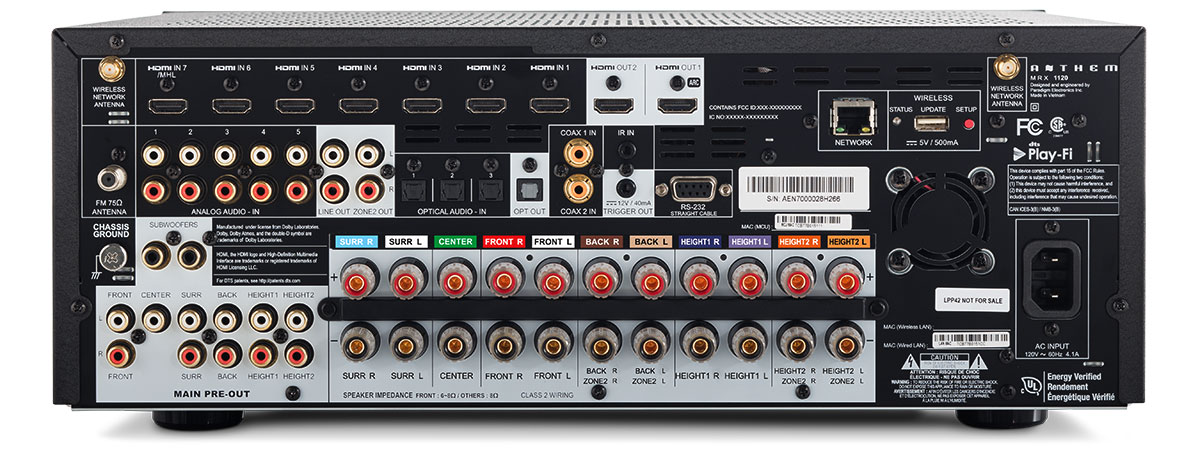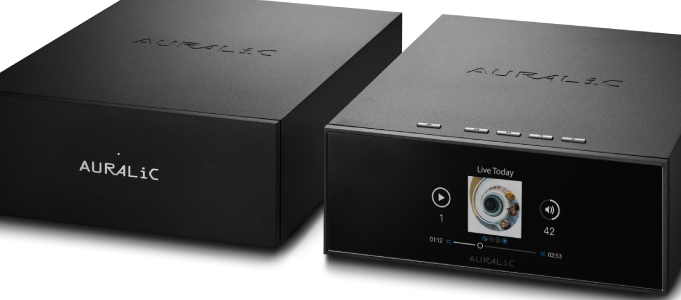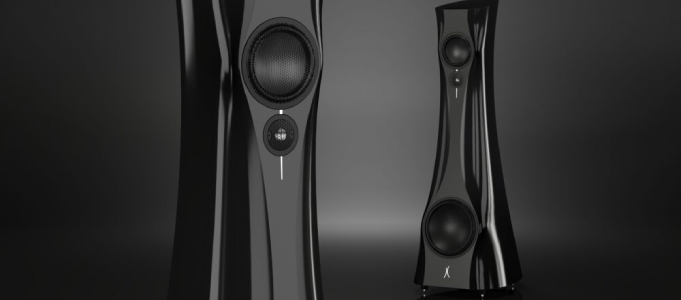REVIEW: ANTHEM MRX-1120 HOME THEATRE RECEIVER

Prefer to read the PDF? Click below, otherwise, read on.
Coincidently The Magnificent 7 Blu-ray arrived at the same time as Anthem’s MRX-1120 AVR for review.
Growing up in the pre-VCR days of the seventies, I can vividly remember watching the original along with other classic Westerns, such as High Noon and Rio Bravo. All delivered courtesy of our 48cm Rank Arena, in luscious mono sound.
Of course, the good old Rank Arena couldn’t hold a candle to the modern day blockbuster on a 100” screen with multichannel sound. Nonetheless, I still have fond memories of the original and with the credits barely rolling, the subsequent re-enactment which played out in the backyard and neighbourhood streets. So it was with a sense of eagerness and perhaps a little apprehension that I awaited watching The Magnificent 7 with the Anthem MRX-1120 at the helm.
Anthem was the brain-child of North American speaker maker Paradigm. With a solid reputation for building high-end speakers, Paradigm sought to introduce a range of high-end AV components to match its successful speaker range. Paradigm then purchased Canadian company Sonic Frontiers, an audiophile-grade stereo components and DIY kits manufacturer, and so a new company called Anthem was born.
Like its parent company, Anthem rapidly established itself as a producer of high-end AV equipment. With its audiophile roots, components were built from the ground-up out of its Ottawa Research and Development facility. In an increasingly competitive market place, many manufacturers have been forced to move manufacturing offshore to reduce costs and remain competitive. Anthem however, has managed to maintain much of its original doctrine with only final assembly and chassis construction being entrusted to its offshore facility.

Anthem produces a range of components for 2 channel audio and home theatre applications, including AV processers, power amplifiers and AVR’s. There are three AVR’s in the Anthem range.
These start with the entry level 5 channel MRX-520 (RRP $2,099) and continue with the 7 channel MRX-720 (RRP $3,499) and Anthem’s 11 channel flagship AVR, the MRX-1120 (RRP $4,999), the subject of this review.
The MRX-1120 has eleven channels of amplification each rated at 140w continuous power into 8 ohms per channel.
It will support a full 11.2 speaker configuration comprising 2 front speakers, 1 centre speaker, 2 surround speakers, 2 surround back speakers, 4 overhead speakers and two subwoofers.
Naturally, being an elven channel amplifier, the MRX-1120 will decode the newer Dolby Atmos and DTS: X soundtracks found on today’s blurays and Ultra HD discs.
With the addition of DTS Play- Fi, the MRX-1120 expands on its Zone 2 capabilities, providing wireless multi-room audio and streaming. You can download the free DTS Play-Fi app to a smart phone or tablet to access music stored on a home server and apps such as Spotify, Deezer, Pandora, Tidal and Internet Radio.
Building on Anthem’s principal of in-house production, Anthem’s engineers have created their propriety Anthem Room Correction (ARC) software. ARC was heavily influenced by a three year study undertaken by Canada’s National Research Council, called The Athena Project. The project involved parent company Paradigm and legendary sound engineer Dr Floyd Toole*, who studied Perceived Sound In Rooms and the most effective way to apply automated room correction.

What’s in the box?
The MRX-1120 has a mottled black chassis and its face plate is constructed of black, brushed anodized aluminium. Much like the rest of Anthem’s range, the MRX-1120 has a very distinctive look, which would be perfectly at home in a rack of high-end AV components. Its LED display is on the smaller side, but not small enough to cause this ageing reviewer to squint.
The aluminium volume dial is located to the right of the LED display, and on the left is a circular group of buttons for navigating the MRX-1120’s on screen menus. All sources (e.g. bluray, game) can be selected directly from buttons located below the LED display. HDMI/MHL (mobile high-definition link) input, head-phone jack and USB port for software updates are located behind a small pull-down flap on the left hand side of the facia.
Connectivity options abound, with the back of the MRX-1120 having seven HDMI 2.0a inputs and two HDMI outputs, with audio return channel (HDMI output 1). In addition, the MRX-1120 has five analogue inputs, three optical inputs, two coaxial inputs, Zone 2 and line level inputs.
For those who would like to add external amplification, the MRX-1120 has pre-outs for all of its 11 channels. Rounding out the MRX-1120’s connections are a pair of high quality speaker binding posts for each of the 11 channels, and a LAN input (however Wi-Fi connectivity is also built-in).
There’s also IR inputs, 12v triggers and an RS-232 interface for system integration.

Gone but not missed in this reviewer’s opinion, were component video inputs. I suspect that most consumers will not need component video inputs in today’s HDMI world. They’d also be happy not to pay for unused connections, especially when their money can be spent on other, more relevant aspects of the MRX-1120’s design.
Of far more notable absence was the lack of independent subwoofer outputs, especially for an AVR at this price-point. While the MRX-1120 does have dual subwoofer outputs they are connected in ‘parallel’. What that means is any signal sent to connected subs will be summed, with both subwoofers playing an identical signal and being calibrated as a ‘single-sub’. Personally, I’m not a fan of this approach as it doesn’t allow for independent level control of both subs.
On face value, this seemed to be a glaring omission on Anthem’s part. However, after a conversation with Anthem’s Australian distributors and some further research, there are some very sound reasons (pun intended) for using parallel subwoofer outputs.
Independent subwoofer channels can create acoustical anomalies with calibration. For this reason, Anthem has deliberately opted for parallel subwoofer outputs. This means subwoofer placement will need to be more carefully considered, and ideally both subs should be equidistant from the main listening position. With a large body of research having gone into its creation, I felt reassured but nonetheless still keen to judge this with my own ears.

The MRX-1120 shipped with a microphone, microphone stand, USB and ethernet cables. Gone was the ‘puck style’ microphone included with most AVR’s, replaced with a high quality cylindrical microphone to accompany the ARC software. Where most manufacturers do not include a microphone stand, the MRX-1120 comes with an aluminium microphone stand.
The long, slim remote shipped with the MRX-1120 has a well-considered button layout, with plenty of room between buttons. The shape of the MRX-1120’s remote meant it sat quite nicely in the hand and was easy to use. My only reservation was the lack of backlighting but sadly, this seems to have become commonplace with all AVR manufacturers now.
It was refreshing to find that the MRX-1120 comes with a user manual. Not the quick start guide that is typically supplied with most AVR’s but a good old fashioned, user guide that explains how to connect things and get the best performance from the MRX-1120.
Setup
Connecting my speakers and source components to the MRX-1120 was relatively straight forward, with ample room between the speaker binding posts.
With Anthem claiming “separates-quality performance in a gutsy, feature rich AV receiver”, I began by connecting the MRX-1120 to a five-channel power amplifier, only using two of the MRX-1120’s amplifiers to power my overhead speakers.
The on-screen setup menu of the MRX-1120 is quite functional. Whilst you won’t find extensive demonstrations on how to connect your speakers, don’t fret. This is dealt with in the user manual and if you work through the menus systematically you will be up and running in no time.
Anthem’s Room Correction (ARC) software is not built into the MRX-1120. It needs to be downloaded from the Anthem website, or if you’re of the “Apple persuasion” there’s an ARC setup app available from the app store. With most manufacturers building room correction software directly into their AVR’s, this may seem a bit odd. But given its level of customisation (see below), it’s far better suited to this style of interface.
As the included microphone has been calibrated at Anthem’s Ottawa facility for accuracy, you will be prompted to enter the serial number when first downloading the ARC software. This means that in addition to downloading the software, you will also download an offset table that’s incorporated into the software ensuring the best level of accuracy from your microphone.
While most automated calibration systems will calibrate the full frequency response of a home theatre system, ARC defaults to an upper limit of 5kHz. This can be overridden and extended to 10kHz, 15kHz or 20kHz if you choose.
With some acousticians firmly of the view that EQ should only be applied to lower frequencies, this puts both the choice and the control at the user’s finger-tips.
ARC supplies a detailed analysis of every speaker’s room response, both prior to calibration and after ARC has worked its magic. Having this sort of information opens a lot of doors for home theatre aficionados, including the ability to fine-tune speaker placement.

Performance
With The Magnificent 7 in hand and a bowl of Reece’s Buttercups at my trigger finger, it was time to hunker down for some serious listening.
From the get go, it was clear that Anthem’s MRX-1120 was capable of achieving some serious volume levels, so much so that I couldn’t play at my usual volume levels without waking the entire house.
The MRX-1120 created a huge, seamless soundstage that threatened to burst the seams of my small to medium sized home theatre room. The soundstage was seamless, with the MRX-1120 not calling attention to any particular speaker in the room, but rather creating a unified sound-field.
Detail was in abundance. As Chisolm makes his way through an unforgiving desert environment, the harsh winds can be clearly heard whipping around him. While there are plenty of AVR’s out there that are capable of turning in a detailed performance, the MRX-1120 had a way of bringing detail to the fore and giving it a sense of realism. With Chisolm riding into town, the sounds of the townsfolk going about their business and the rings from the smithy’s hammer are all clearly rendered.
The MRX-1120 was also quick to show me who’s in control, putting any doubts I had about its parallel subwoofer inputs to rest. When the mines are blown early in the movie, I was startled as the explosions rattled the otherwise serene countryside; a rarity these days unless I’m watching a James Wan horror movie.

Whether it was the sound of explosions or the ever-present gunfire, the MRX-1120 delivered some serious sonic impact. However, the bass never overwhelmed the soundtrack with the MRX-1120 always remaining firmly in control and delivering tight, clean bass.
With the level of sonic mayhem found within The Magnificent 7 soundtrack, it’s not uncommon to have to boost the level of the centre speaker so that dialogue can be clearly heard. In this case, the dialogue remained clear, whether it was within the confines of the quiet church, or when Bartholomew Bogue’s army of cronies descends upon the citizens of Rose Creek.
Impressed by performance so far it was time to revisit some favourites. Whether 2015’s Deadpool is your cup of tea or not, the accompanying DTS-HD and Dolby Atmos soundtracks are top notch.
With Deadpool wreaking havoc on a busy Vancouver freeway, the MRX-1120 turned in a powerful performance with loads of dynamic range. In fact, it made my own AVR sound ‘restrained’ by comparison. I suspect Anthem’s Room Correction software can take a fair share of the credit here, taming the all-important lower frequencies without constraining the higher end frequencies.
Disney’s 2016 release of The Finest Hours slipped under most people’s radar. Based on the true story of the American Coast Guards most famous rescue in treacherous conditions, it’s a great watch. During quieter scenes, the Anthem AVR still conjured a huge soundstage bringing all the detail to the fore and with easily discernible dialogue. With the storm in full swing and the rescue from the SS Pendleton underway, the MRX-1120 gave a powerful performance reinforcing the strength of the huge waves.
No review would be complete without an appearance from this reviewer’s favourite mutant. In terms of audio performance, 2013’s The Wolverine has a lot to offer. The Anthem perfectly rendered the oftentimes frenetic action. With roof-hopping ninja giving chase to the Yakuza in Tokyo’s streets, the sense of spaciousness in the city streets was accurately conveyed.
Having a better understanding of what this flagship offering was capable of with external amplification, it was high-time to see if its own amplifiers could fulfil Anthem’s claims. Without the power-amplifier connected, I did have to nudge the volume up a little. But it was still well below the volume level I normally require.
Comparing the MRX-1120 on its own against my Denon AVR connected to an external Rotel 5-channel amplifier, I could barely pick the difference. If there was any difference it wasn’t very discernible and that speaks volumes of the Anthem MRX-1120’s capability.

Conclusion
With the Anthem MRX- 1120 in charge of the soundtrack this ole’ cowboy had a blast watching Antoine Fuqua’s reimagining of the classic Magnificent 7.
Regardless of the source or content, the MRX-1120 delivered a massive, detailed sound-stage with lashings of sonic impact.
If I had to choose one word to describe the performance of Anthem’s MRX-1120, it would be ‘’cinematic’’. At the end of the day, this is what good home theatre is all about folks.
*If you’re interested in learning more about Dr Floyd Toole’s research into room acoustics (which continued after his work with the NRC), I can highly recommend his book “Sound Reproduction Loudspeakers and Rooms” (2008)
For more information visit the Anthem brand page.
Tony O'Brien
As the owner of Adelaide based ‘Clarity Audio & Video Calibration’, Tony is a certified ISF Calibrator. Tony is an accomplished Audio-Visual reviewer specialising in theatre and visual products.
Posted in:Home Theatre
Tags: anthem audio active
JOIN IN THE DISCUSSION
Want to share your opinion or get advice from other enthusiasts? Then head into the Message Forums where thousands of other enthusiasts are communicating on a daily basis.
CLICK HERE FOR FREE MEMBERSHIP
Trending
applause awards
Each time StereoNET reviews a product, it is considered for an Applause Award. Winning one marks it out as a design of great quality and distinction – a special product in its class, on the grounds of either performance, value for money, or usually both.
Applause Awards are personally issued by StereoNET’s global Editor-in-Chief, David Price – who has over three decades of experience reviewing hi-fi products at the highest level – after consulting with our senior editorial team. They are not automatically given with all reviews, nor can manufacturers purchase them.
The StereoNET editorial team includes some of the world’s most experienced and respected hi-fi journalists with a vast wealth of knowledge. Some have edited popular English language hi-fi magazines, and others have been senior contributors to famous audio journals stretching back to the late 1970s. And we also employ professional IT and home theatre specialists who work at the cutting edge of today’s technology.
We believe that no other online hi-fi and home cinema resource offers such expert knowledge, so when StereoNET gives an Applause Award, it is a trustworthy hallmark of quality. Receiving such an award is the prerequisite to becoming eligible for our annual Product of the Year awards, awarded only to the finest designs in their respective categories. Buyers of hi-fi, home cinema, and headphones can be sure that a StereoNET Applause Award winner is worthy of your most serious attention.






